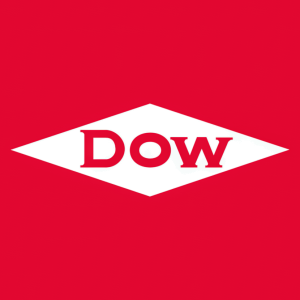Dow Benelux outlines roadmap to support Dutch Climate Agreement, achieve CO2 emissions neutrality
Dow Benelux has announced a roadmap to cut CO2 emissions by over 40% at its Terneuzen site by 2030, aiming for net CO2 neutrality by 2050. The plan includes a clean hydrogen plant expected to start up in 2026, which could reduce emissions by 1.4 million tons annually, equating to over 300,000 cars. The initiative will create 3,500 to 4,000 construction jobs and 400 to 500 permanent positions. By 2030, further CO2 capture is planned to avoid another 300,000 tons of emissions. Dow prioritizes sustainability while addressing climate change challenges.
- Targeting over 40% CO2 reduction by 2030 at Terneuzen.
- Clean hydrogen plant expected to cut 1.4 million tons of CO2 emissions annually.
- Creation of 3,500 to 4,000 construction jobs and 400 to 500 permanent jobs.
- Continued commitment to carbon neutrality by 2050.
- Preliminary investment decision for the roadmap is pending.
Dow Benelux today outlined its roadmap to reduce current CO2 emissions from its Terneuzen, the Netherlands, operations by more than 40 percent by 2030 on its path to achieve net CO2 neutrality by 2050.
The roadmap makes Terneuzen a flagship site and role model for the Company’s global transition to meet its goal of achieving carbon neutrality by 2050. The roadmap to CO2 neutrality is designed in three phases.
In the first phase, the plan foresees the construction of a clean hydrogen plant where by-products from core production processes would be converted into hydrogen and CO2. The hydrogen would be used as a clean fuel in the production process. The CO2 would be captured and stored until alternative technologies develop, and Dow will also look for ways to enable usage of the CO2 in its processes rather than storing it.
The hydrogen plant is expected to startup in 2026 and would allow Dow in Terneuzen to reduce CO2 emissions by approximately 1.4 million tons per year. This is equivalent to the annual emissions of more than 300,000 cars.
The first phase would also include additional investments in site infrastructure for CO2 liquefaction, air separation, hydrogen distribution and CO2 transport.
The project will create green jobs. Building the new hydrogen plant and the associated infrastructure is expected to create 3,500 to 4,000 engineering and construction jobs over a period of 3 years and 400 to 500 permanent jobs at Dow, in the region and across associated service providers.
In the second phase, by 2030, Dow will capture CO2 from its ethylene oxide plant and replace some gas turbines with electrical motor drives. This will avoid a further 300,000 tons of CO2 emissions per year.
The third and final phase of the plan will develop and implement additional breakthrough technologies to replace fuel usage in the production processes. An example is Dow’s previously announced collaboration with Shell to electrify ethylene steam cracking furnaces. These furnaces currently rely on fuel combustion, which makes them CO2-emission intensive when not fired on clean hydrogen. Switching to electrical cracking with clean electricity will reduce the CO2 footprint of the production process to near zero emissions.
Commenting on the plan, Dow Benelux President Anton van Beek said: “We are part of a vital and critical industry – we supply building blocks for thousands of consumer goods, many of which provide CO2 reducing benefits to our customers and the value chain. We want to continue to supply those products while enhancing our long-standing commitment to sustainability, so we need and want to adapt how we manufacture those products to help address climate change. With this roadmap we aim to enable low-CO2 products to be made in the Netherlands.”
A preliminary investment decision on the implementation of Dow’s Terneuzen roadmap is expected in 2022. Van Beek commented, “To reach a positive decision, we are completing feasibility studies and continue to perfect new technologies. In addition, public-private collaboration will be of utmost importance. The scale and complexity of the challenge is such that only through the collaboration of industry, academia, government and others, can we turn the tide on climate change. We encourage the Dutch government to continue to partner with industry and incentivize investment in clean energy and related technologies to support the long-term competitiveness of Dutch industry while reducing carbon emissions and achieving net carbon neutrality.”
These efforts also support Dow’s broader targets to achieve carbon neutrality by 2050, eliminate plastic waste in the environment and increase its positive impacts on customers, business and society. Since 2005, Dow has reduced overall greenhouse gas emissions by 15 percent. And today, Dow is the number one purchaser of clean energy in the chemicals industry and in the top 25 among global corporations for clean energy purchases. The Company’s site in Tarragona, Spain, for example, now sources 100 percent of its electricity needs from renewable sources.
About Dow
Dow (NYSE: DOW) combines global breadth, asset integration and scale, focused innovation and leading business positions to achieve profitable growth. The Company’s ambition is to become the most innovative, customer centric, inclusive and sustainable materials science company, with a purpose to deliver a sustainable future for the world through our materials science expertise and collaboration with our partners. Dow’s portfolio of plastics, industrial intermediates, coatings and silicones businesses delivers a broad range of differentiated science-based products and solutions for its customers in high-growth market segments, such as packaging, infrastructure, mobility and consumer care. Dow operates 106 manufacturing sites in 31 countries and employs approximately 35,700 people. Dow delivered sales of approximately
View source version on businesswire.com: https://www.businesswire.com/news/home/20210608005668/en/
FAQ
How does Dow plan to reduce CO2 emissions by 2030?
What is the expected impact of the clean hydrogen plant on CO2 emissions?
How many jobs will the hydrogen plant project create?
When is the clean hydrogen plant expected to start operating?







